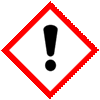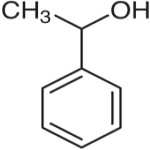CAS Number 60-12-8, Phenylethyl Alcohol or Phenethyl Alcohol or Phenyl Ethanol USP Grade Manufacturers Exporters







CAS Number 60-12-8, Phenylethyl Alcohol or Phenethyl Alcohol or Phenyl Ethanol Manufacturer Exporter
For Properties Specifications of Phenylethyl Alcohol or Phenethyl Alcohol or Phenyl Ethanol Click Properties, Specifications of Phenylethyl Alcohol or Phenethyl Alcohol or Phenyl Ethanol Manufacturer.
For Uses of Phenylethyl Alcohol or Phenethyl Alcohol or Phenyl Ethanol Click Uses of Phenylethyl Alcohol or Phenethyl Alcohol or Phenyl Ethanol Manufacturer.
For For SDS MSDS Sheet of Phenylethyl Alcohol or Phenethyl Alcohol or Phenyl Ethanol Click SDS Safety Data Sheet MSDS Sheet of Phenylethyl Alcohol or Phenethyl Alcohol or Phenyl Ethanol Manufacturer.
The Properties and Specifications of Phenylethyl Alcohol or Phenethyl Alcohol or Phenyl Ethanol:
Phenylethyl Alcohol USP Grade Specifications
C8H10O --- 122.17
Benzeneethanol.
Phenethyl alcohol --- CAS 60-12-8
Packaging and storage: Preserve in tight, light-resistant containers, and store in a cool, dry place.
Identification: Infrared Absorption.
Specific gravity: between 1.017 and 1.020.
Refractive index: between 1.531 and 1.534 at 20.
Residue on ignition: Evaporate 10 mL in a suitable crucible, and ignite to constant weight: the limit is 0.005%.
Chlorinated compounds: Wind a 1.5- × 5-cm strip of 20-mesh copper gauze around the end of a copper wire. Heat the gauze in the non-luminous flame of a Bunsen burner until it glows without coloring the flame green. Permit the gauze to cool, and heat several times until a good coat of oxide has formed. Apply with a medicine dropper 2 drops of Phenylethyl Alcohol to the cooled gauze, ignite, and permit it to burn freely in the air. Again cool the gauze, add 2 more drops of Phenylethyl Alcohol, and burn as before. Continue this process until a total of 6 drops has been added and ignited, and then hold the gauze in the outer edge of the Bunsen flame, adjusted to a height of about 4 cm: no transient green color or other color is imparted to the flame.
Aldehyde: Shake 5 mL with 5 mL of 1 N sodium hydroxide, and allow to stand for 1 hour: no yellow color appears in the organic (top) layer.
The Uses of Phenylethyl Alcohol or Phenethyl Alcohol or Phenyl Ethanol:
It is an antimicrobial, antiseptic, and disinfectant that is used also as an aromatic essence and preservative in pharmaceutics and perfumery. It is widely used in foods, fragrances, and cosmetics.
The MSDS-SDS Hazard Statement of Phenylethyl Alcohol or Phenethyl Alcohol or Phenyl Ethanol:
Phenethyl alcohol SDS GHS, Safety Data Sheet
MSDS Sheet, Material Safety Data Sheet 15-Jan-23
1. Product Identification
Product Name & Other Names: 2-phenylethanol or Benzyl carbinol or 2-phenylethanol or Benzyl carbinol.
CAS No.: 60-12-8
EINECS EC Number: 200-456-2
Molecular Weight: 122.16
Chemical Formula: C8H10O
FEMA Number: 2858
Relevant uses and uses advised against (if any): Industrial Manufacturing.
2. Hazards Identification
GHS, Globally Harmonized System Classification in accordance with 29 CFR 1910
Classification according to Regulation (EC) No 1272/2008
Acute toxicity, oral Category 4, H302
Serious eye damage/eye irritation Category 2A, H319
Labeling according to GHS & Regulation (EC) No 1272/2008
GHS Label Elements  Irritant |
Signal Words: Warning
Hazard statements:
H302: Harmful if swallowed.
H319: Causes serious eye irritation.
Precautionary statements:
P264: Wash … thoroughly after handling.
P270: Do not eat, drink, or smoke when using this product.
P280: Wear protective gloves/protective clothing/eye protection/face protection.
P330: Rinse mouth.
P301+312: IF SWALLOWED: Call a POISON CENTER or doctor/physician if you feel unwell.
P305+351+338: IF IN EYES: Rinse cautiously with water for several minutes. Remove contact lenses if present and easy to do – continue rinsing.
P337+313: If eye irritation persists get medical advice/attention.
3. Composition/Information on Ingredients
Product Name & Other Names: 2-phenylethanol or Benzyl carbinol or 2-phenylethanol or Benzyl carbinol.
CAS No.: 60-12-8
EINECS EC Number: 200-456-2
4. First Aid Measures
Always seek medical attention after first aid measures are provided.
Inhalation: Remove to fresh air. If not breathing, give artificial respiration. If breathing is difficult, give oxygen. Get medical attention.
Ingestion: Never give anything by mouth to an unconscious person. Get medical attention.
Skin Contact: Wipe off excess material from skin then immediately flush skin with plenty of water for at least 15 minutes. Remove contaminated clothing and shoes. Get medical attention. Wash clothing before reuse. Thoroughly clean shoes before reuse.
Eye Contact: Immediately flush eyes with plenty of water for at least 15 minutes, lifting lower and upper eyelids occasionally. Get medical attention immediately.
5. Fire Fighting Measures
Flammability of the Product: Combustible at high temperature. Vapors can travel to a source of ignition and flash back.
Flash Points: 102C Closed Cup.
Products of Combustion: Fumes, Carbon dioxide & Carbon Monoxide.
Fire Extinguishing Media: Use means suitable for extinguishing surrounding fire. Use water spray, alcohol-resistant foam, dry chemical or carbon dioxide.
Special Information: In the event of a fire, wear full protective clothing and NIOSH-approved self-contained breathing apparatus with full face piece operated in the pressure demand or other positive pressure mode. At high temperatures or when moistened under fire conditions, it may produce toxic or irritating fumes. On decomposition it may emit carbon monoxide. Containers may explode on heating.
6. Accidental Release Measures
Personal precautions, protective equipment, and emergency procedures: Avoid breathing dust/fumes/gas/mist/vapors/spray. Use individual protective equipment (waterproof boots, suitable protective clothing, safety glasses, etc.). Do not approach facing the wind.
Environmental precautions: Do not let the product enter drains, soil, or water sources.
Methods and materials used for containment Cleanup procedures and Storage: Contain spilled material. Do not let the product enter drains. Use a shovel to put the material into a convenient waste disposal container. Finish cleaning by spreading water on the contaminated surface and allow evacuating as per law.
7. Handling and Storage
Precautions for safe handling: Apply according to good manufacturing and industrial hygiene practices. Ensure proper ventilation. In case of insufficient ventilation, wear suitable respiratory equipment. Wash thoroughly after handling. Do not drink, eat, or smoke while handling. Avoid contact with skin, eyes, and clothing. Minimize dust generation. Avoid breathing dust/fumes/gas/mist/vapors/spray. Keep container tightly closed. Avoid ingestion and inhalation. Use individual protective equipment (waterproof boots, suitable protective clothing, safety glasses, etc.).
Conditions for safe storage, including any incompatibilities: Store in cool, dry, and ventilated area away from heat sources and protected from sunlight in tightly closed original container. Keep air contact to a minimum. Store protected from heat, sparks and ignition sources and incompatible materials. Avoid contact with skin and eyes. Avoid inhalation of dust/mist/vapor. Do not store with incompatible materials like strong oxidizing agents, acids, strong bases. Keep away from heat, sun light.
8. Exposure Controls/Personal Protection
Airborne Exposure Limits: Not Specified.
Ventilation System: A system of local and/or general exhaust is recommended to keep employee exposures as low as possible.
Personal Respirators (NIOSH Approved): For conditions of use where exposure to dust or mist is apparent and engineering controls are not feasible, a particulate respirator may be worn.
Skin Protection: Wear protective gloves and clean body-covering clothing.
Eye Protection: Use chemical safety goggles and/or full face shield where dusting or splashing of solutions is possible. Maintain eye wash fountain and quick-drench facilities in work area.
Other Control Measures: Maintain good housekeeping in work area. Handle in accordance with good industrial hygiene and safety practice.
9. Physical and Chemical Properties
Appearance: It is colorless to yellowish liquid.
Odor: Strong typical floral.
Odor threshold: Not available.
pH: Not available.
Relative density: around 1.02
Boiling Point: 219C - 221C.
Melting Point: -27C.
Flash point: Not available.
Auto-ignition temperature: Not available.
Decomposition temperature: Not available.
Upper/lower flammability or explosive limits: Not available.
Vapor pressure: Not available.
Vapor density: Not available.
Evaporation rate: Not available.
Flammability (solid, gas): Not available.
Partition coefficient: n-octanol/water: Not available.
Solubility: It is slightly soluble in water.
Viscosity: Not available.
10. Stability and Reactivity
Stability: It is stable under ordinary conditions of use and storage.
Hazardous Decomposition Products: It emits carbon monoxide & fumes when heated to decomposition. It may form harmful gases.
Hazardous Polymerization: Will not occur.
Incompatibilities: Strong oxidizing agents, acids, strong bases.
Conditions to Avoid: Incompatible materials, light, dust generation, excess heat.
11. Toxicological Information
Toxicity data
LD50 Oral - Rat - 1,790 mg/kg(2-Phenylethanol)
LD50 Dermal - Rabbit - 2,535 mg/kg(2-Phenylethanol)
Carcinogenicity: No component of this product present at levels greater than or equal to 0.1% is identified as possible or confirmed human carcinogen by IARC, ACGIH, OSHA and NTP.
Mutagenic Effects: Not available.
Developmental Toxicity: Adverse reproductive effects have occurred in experimental animals.
Reproductive Effects: No information available.
12. Ecological Information
Toxicity to fish:
Freshwater Fish: LC50=220-460 mg/L 96 h
Water Flea: EC50=287.17mg/L 48 h
Freshwater Algae: EC50=490mg/L 72 h
Environmental Fate: This substance is expected to have a high biological oxygen demand. It is readily biodegradable and has low bioconcentration potential.
Results of PBT and vPvB assessment: This substance/mixture contains no components considered to be either persistent, bioaccumulative and toxic (PBT), or very persistent and very bioaccumulative (vPvB) at levels of 0.1% or higher.
13. Disposal Considerations
Whatever cannot be saved for recovery or recycling should be managed in an appropriate and approved waste disposal facility.
14. Transport Information
DOT USA, TDG Canada & ADR/RID Europe: Not controlled.
IATA: Not controlled.
IMDG/IMO & IATA: Not controlled.
15. Regulatory Information
USA:
SARA 311/312: See section 2.
16. Other Information
Disclaimer:
*****************************
Our company provides this Phenethyl alcohol MSDS sheet in good faith but makes no representation as to its comprehensiveness or accuracy. This SDS sheet is intended only as a guide to the appropriate precautionary handling of the material by a properly trained person using this product. The above information has been compiled from various sources and has the possibility of discrepancy and being out-dated information. Individuals receiving the information must exercise their independent judgment and do further search in determining its appropriateness for a particular purpose. In no case shall our company be liable to loss or damages by the product user.
*****************************
Anmol Chemicals & Pharmaceuticals Pvt. Ltd. is an off-shoot of Anmol Chemicals Taloja. It is located in MIDC Taloja and it is manufacturing pharmaceutical grades of API, Excepients, Food grade and Reagent grade chemicals. Anmol Chemicals & Pharmaceuticals Pvt. Ltd. is a several decades old group of companies, engaged in manufacturing, supplying, distributing, wholesale supplies for actual users, retail or small pack supplies for research and development chemicals, fine and speciality chemicals, pharmaceutical excipients, mineral fortifiers in chemically pure, Analytical reagent grade, IP BP USP Ph Eur EP JP and other pharmaceutical grade monograph including FCC Food grade chemicals and Nutraceuticals, Mineral Fortifiers at best prices.

Phenylethyl Alcohol or Phenethyl Alcohol or Phenyl Ethanol Structure
CAS Number 60-12-8, Phenylethyl Alcohol or Phenethyl Alcohol or Phenyl Ethanol Manufacturer Exporter
ANMOL CHEMICALS & PHARMACEUTICALS Pvt. Ltd.
India, USA, Europe, UAE
TELEPHONE: +912223770100
Navi Mumbai, INDIA
e-mail: info(At the rate i.e. @)anmol.org
Copyright. 4-dec-24
We manufacture:
Glacial Acetic Acid Manufacturer
Phenazopyridine Hydrochloride or Phenazopyridine HCl
Phenoxyethanol or Ethylene Glycol Monophenyl Ether or 2-Phenoxyethyl Alcohol

